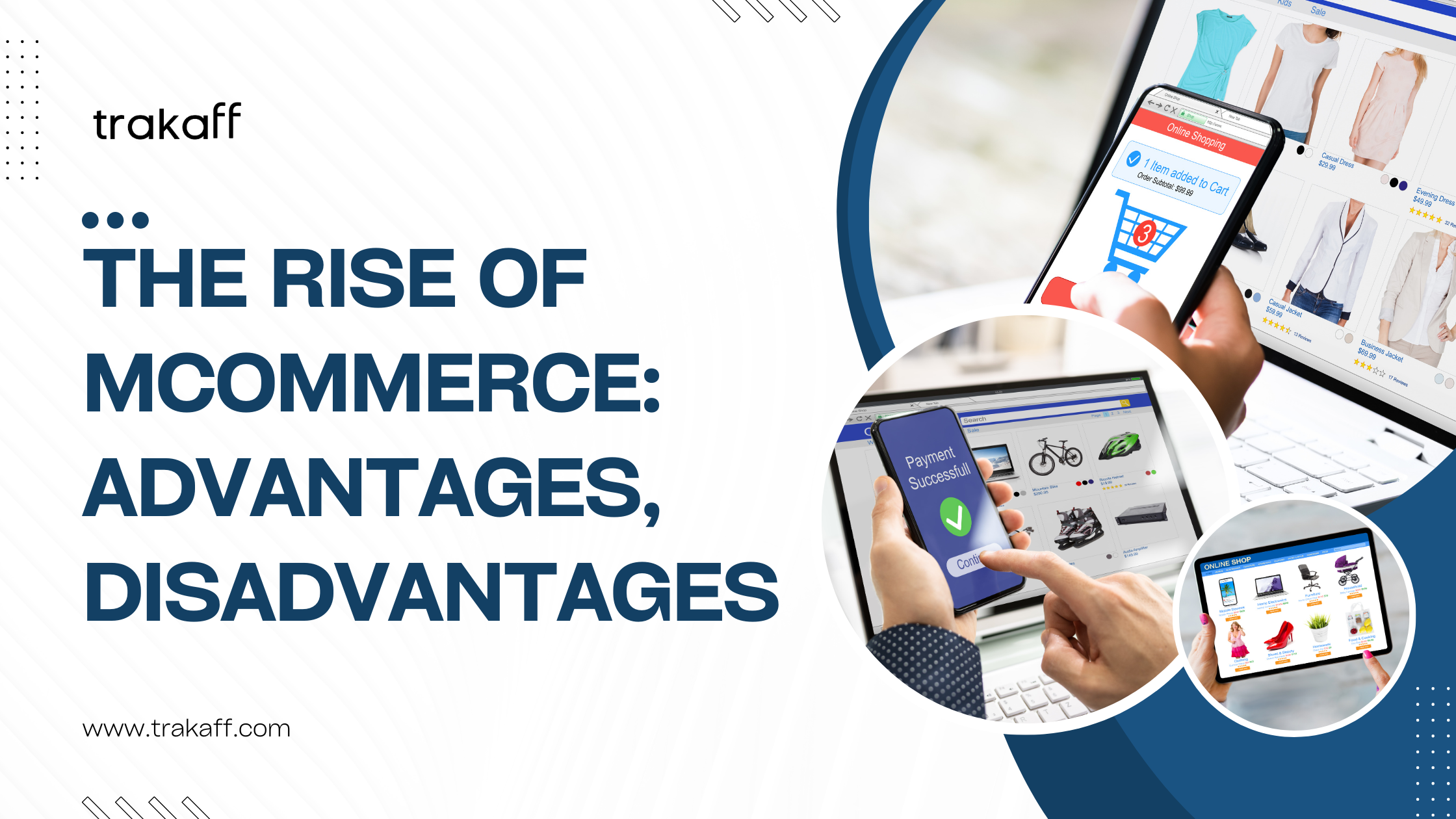Mobile commerce, or mcommerce, has revolutionized the way we shop and conduct business. With the convenience of making purchases through mobile devices, mcommerce has become a powerful force in the retail industry. But like any technology, mcommerce comes with its own set of advantages and disadvantages. In this comprehensive guide, we’ll explore the key benefits and challenges of mcommerce, and provide insights into how businesses and consumers can navigate this rapidly evolving landscape.

Advantages of Mcommerce
1. Convenience and Accessibility
One of the most significant advantages of mcommerce is its convenience and accessibility. With a smartphone or tablet, consumers can shop anytime, anywhere, without being tethered to a desktop computer. This flexibility allows for impulse purchases and spontaneous shopping, driving increased sales for businesses.
2. Personalization and Targeting
Mcommerce platforms leverage customer data to provide personalized shopping experiences. By analyzing browsing history, purchase patterns, and preferences, businesses can offer tailored product recommendations and targeted promotions. This level of personalization enhances the user experience and increases the likelihood of conversions.
3. Seamless Integration with Mobile Apps
Many businesses have developed mobile apps that integrate seamlessly with their e-commerce platforms. These apps offer features such as quick checkout, loyalty programs, and push notifications, making the shopping experience smoother and more engaging for customers.
4. Increased Reach and Customer Base
With mcommerce, businesses can tap into a vast global market. By optimizing their websites and apps for mobile devices, they can reach a wider audience, including those in remote areas or developing countries where desktop access may be limited. This expanded reach translates to a larger customer base and increased revenue potential.
Disadvantages of Mcommerce
1. Security Concerns
Despite its convenience, mcommerce presents security challenges. Mobile devices are more susceptible to hacking and malware attacks, putting sensitive customer data at risk. Businesses must implement robust security measures, such as encryption and secure payment gateways, to protect their customers’ information.
2. Limited Screen availability
Mobile screens have less space compared to desktop monitors, which can limit the amount of information displayed on a page. This poses challenges for businesses trying to showcase products, product descriptions, and customer reviews effectively. Optimizing content for mobile devices requires a careful balance of brevity and impact to ensure a positive user experience.
3. Technical Compatibility Issues
Not all mobile devices are created equal, and compatibility issues can arise when attempting to deliver a consistent mcommerce experience. Different operating systems, screen sizes, and device capabilities can affect how a website or app functions. Businesses must test their mcommerce solutions across multiple devices to ensure a seamless user experience.
4. Higher Cart Abandonment Rates
Mcommerce often suffers from higher cart abandonment rates compared to traditional e-commerce. Factors such as slow loading times, complicated checkout processes, and security concerns can lead customers to abandon their purchases midway. Businesses must work to streamline the mcommerce journey and reduce friction points to improve conversion rates.
5. Dependence on Mobile Networks
Mcommerce relies heavily on mobile networks, which can be unreliable in certain areas or during peak usage times. Slow or intermittent internet connections can frustrate users and negatively impact their shopping experience. Businesses must optimize their mcommerce platforms for faster loading speeds and consider offline capabilities to mitigate this issue.
The Future of Mcommerce
Despite its challenges, mcommerce continues to grow at a rapid pace, driven by advancements in technology and shifting consumer behavior. Emerging trends such as voice commerce, augmented reality, and social commerce are set to shape the future of mcommerce.
Voice Commerce: The Rise of Voice Assistants
Voice-assistants like Amazon Alexa and Google Assistant have revolutionized the way consumers interact with technology. Voice-commerce, or v-commerce, allows users to make purchases using voice commands, making the shopping process even more convenient. Businesses must optimize their mcommerce platforms for voice search and develop voice-based shopping experiences to stay competitive.
Enhancing the Shopping Experience

Augmented reality (AR) has the potential to transform the mcommerce landscape by providing immersive and interactive shopping experiences. AR allows customers to virtually try on products, view items in 3D, and get a better sense of size and fit before making a purchase. This technology can help reduce return rates and increase customer satisfaction. As AR becomes more prevalent, businesses must explore ways to integrate it into their mcommerce strategies to stay ahead of the curve.
Social Commerce: Shopping Meets Social Media
The convergence of social media and mcommerce, known as social commerce, is another emerging trend to watch. Platforms like Instagram and Facebook have introduced features that allow users to make purchases directly from their social media feeds. By leveraging the power of social influencers and user-generated content, businesses can drive brand awareness and sales through social commerce.
Embracing the Mcommerce Revolution
As mcommerce continues to grow and evolve, businesses must adapt their strategies to capitalize on its potential. By understanding the advantages and disadvantages of mcommerce and staying ahead of emerging trends, businesses can create seamless, personalized, and secure shopping experiences that drive customer loyalty and revenue growth.
Key Takeaways
- Mcommerce offers convenience, personalization, and increased reach but also presents security challenges, technical compatibility issues, and higher cart abandonment rates.
- Emerging trends such as voice commerce, augmented reality, and social commerce are shaping the future of mcommerce.
- Businesses must optimize their mcommerce platforms for mobile devices, streamline the user experience, and stay updated with the latest technologies to succeed in the mcommerce landscape.
- By providing secure, personalized, and immersive shopping experiences, businesses can build customer trust, increase conversions, and drive long-term success in the mcommerce market.
Conclusion
The rise of mcommerce has revolutionized the way we shop and conduct business. While it offers numerous advantages, businesses must also navigate its challenges and adapt to the ever-evolving landscape. By staying informed, embracing new technologies, and prioritizing user experience, businesses can unlock the full potential of mcommerce and thrive in the digital age.